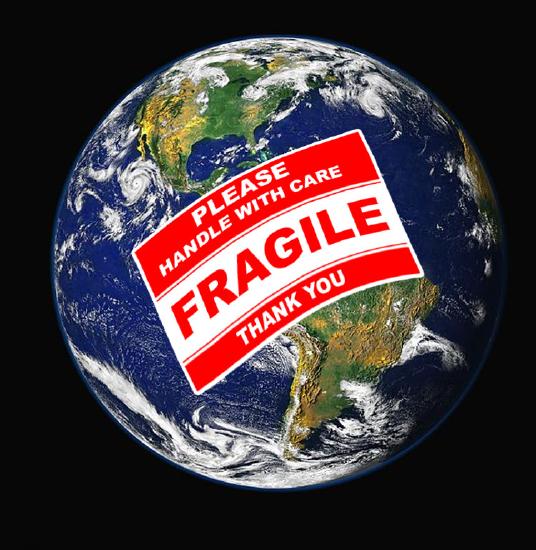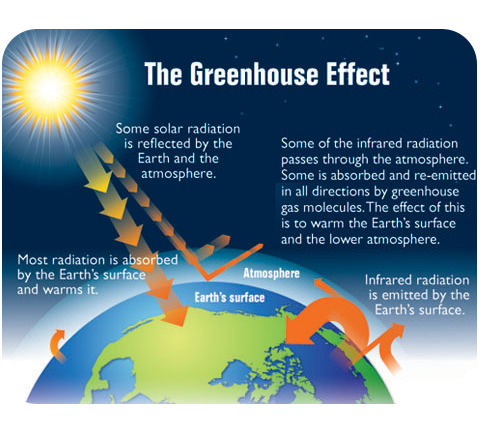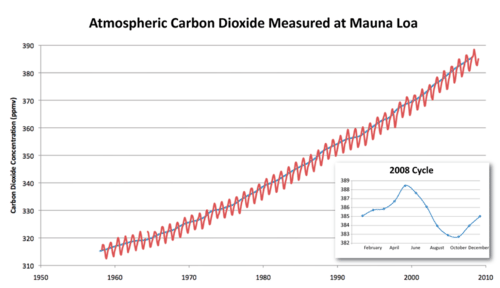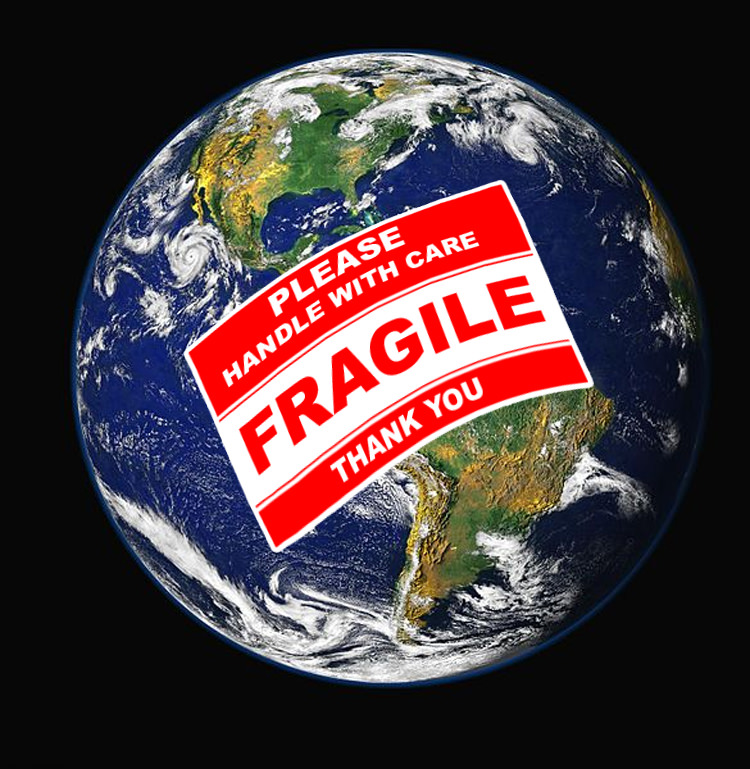6.23: Global Warming
- Page ID
- 12156
\( \newcommand{\vecs}[1]{\overset { \scriptstyle \rightharpoonup} {\mathbf{#1}} } \)
\( \newcommand{\vecd}[1]{\overset{-\!-\!\rightharpoonup}{\vphantom{a}\smash {#1}}} \)
\( \newcommand{\dsum}{\displaystyle\sum\limits} \)
\( \newcommand{\dint}{\displaystyle\int\limits} \)
\( \newcommand{\dlim}{\displaystyle\lim\limits} \)
\( \newcommand{\id}{\mathrm{id}}\) \( \newcommand{\Span}{\mathrm{span}}\)
( \newcommand{\kernel}{\mathrm{null}\,}\) \( \newcommand{\range}{\mathrm{range}\,}\)
\( \newcommand{\RealPart}{\mathrm{Re}}\) \( \newcommand{\ImaginaryPart}{\mathrm{Im}}\)
\( \newcommand{\Argument}{\mathrm{Arg}}\) \( \newcommand{\norm}[1]{\| #1 \|}\)
\( \newcommand{\inner}[2]{\langle #1, #2 \rangle}\)
\( \newcommand{\Span}{\mathrm{span}}\)
\( \newcommand{\id}{\mathrm{id}}\)
\( \newcommand{\Span}{\mathrm{span}}\)
\( \newcommand{\kernel}{\mathrm{null}\,}\)
\( \newcommand{\range}{\mathrm{range}\,}\)
\( \newcommand{\RealPart}{\mathrm{Re}}\)
\( \newcommand{\ImaginaryPart}{\mathrm{Im}}\)
\( \newcommand{\Argument}{\mathrm{Arg}}\)
\( \newcommand{\norm}[1]{\| #1 \|}\)
\( \newcommand{\inner}[2]{\langle #1, #2 \rangle}\)
\( \newcommand{\Span}{\mathrm{span}}\) \( \newcommand{\AA}{\unicode[.8,0]{x212B}}\)
\( \newcommand{\vectorA}[1]{\vec{#1}} % arrow\)
\( \newcommand{\vectorAt}[1]{\vec{\text{#1}}} % arrow\)
\( \newcommand{\vectorB}[1]{\overset { \scriptstyle \rightharpoonup} {\mathbf{#1}} } \)
\( \newcommand{\vectorC}[1]{\textbf{#1}} \)
\( \newcommand{\vectorD}[1]{\overrightarrow{#1}} \)
\( \newcommand{\vectorDt}[1]{\overrightarrow{\text{#1}}} \)
\( \newcommand{\vectE}[1]{\overset{-\!-\!\rightharpoonup}{\vphantom{a}\smash{\mathbf {#1}}}} \)
\( \newcommand{\vecs}[1]{\overset { \scriptstyle \rightharpoonup} {\mathbf{#1}} } \)
\( \newcommand{\vecd}[1]{\overset{-\!-\!\rightharpoonup}{\vphantom{a}\smash {#1}}} \)
\(\newcommand{\avec}{\mathbf a}\) \(\newcommand{\bvec}{\mathbf b}\) \(\newcommand{\cvec}{\mathbf c}\) \(\newcommand{\dvec}{\mathbf d}\) \(\newcommand{\dtil}{\widetilde{\mathbf d}}\) \(\newcommand{\evec}{\mathbf e}\) \(\newcommand{\fvec}{\mathbf f}\) \(\newcommand{\nvec}{\mathbf n}\) \(\newcommand{\pvec}{\mathbf p}\) \(\newcommand{\qvec}{\mathbf q}\) \(\newcommand{\svec}{\mathbf s}\) \(\newcommand{\tvec}{\mathbf t}\) \(\newcommand{\uvec}{\mathbf u}\) \(\newcommand{\vvec}{\mathbf v}\) \(\newcommand{\wvec}{\mathbf w}\) \(\newcommand{\xvec}{\mathbf x}\) \(\newcommand{\yvec}{\mathbf y}\) \(\newcommand{\zvec}{\mathbf z}\) \(\newcommand{\rvec}{\mathbf r}\) \(\newcommand{\mvec}{\mathbf m}\) \(\newcommand{\zerovec}{\mathbf 0}\) \(\newcommand{\onevec}{\mathbf 1}\) \(\newcommand{\real}{\mathbb R}\) \(\newcommand{\twovec}[2]{\left[\begin{array}{r}#1 \\ #2 \end{array}\right]}\) \(\newcommand{\ctwovec}[2]{\left[\begin{array}{c}#1 \\ #2 \end{array}\right]}\) \(\newcommand{\threevec}[3]{\left[\begin{array}{r}#1 \\ #2 \\ #3 \end{array}\right]}\) \(\newcommand{\cthreevec}[3]{\left[\begin{array}{c}#1 \\ #2 \\ #3 \end{array}\right]}\) \(\newcommand{\fourvec}[4]{\left[\begin{array}{r}#1 \\ #2 \\ #3 \\ #4 \end{array}\right]}\) \(\newcommand{\cfourvec}[4]{\left[\begin{array}{c}#1 \\ #2 \\ #3 \\ #4 \end{array}\right]}\) \(\newcommand{\fivevec}[5]{\left[\begin{array}{r}#1 \\ #2 \\ #3 \\ #4 \\ #5 \\ \end{array}\right]}\) \(\newcommand{\cfivevec}[5]{\left[\begin{array}{c}#1 \\ #2 \\ #3 \\ #4 \\ #5 \\ \end{array}\right]}\) \(\newcommand{\mattwo}[4]{\left[\begin{array}{rr}#1 \amp #2 \\ #3 \amp #4 \\ \end{array}\right]}\) \(\newcommand{\laspan}[1]{\text{Span}\{#1\}}\) \(\newcommand{\bcal}{\cal B}\) \(\newcommand{\ccal}{\cal C}\) \(\newcommand{\scal}{\cal S}\) \(\newcommand{\wcal}{\cal W}\) \(\newcommand{\ecal}{\cal E}\) \(\newcommand{\coords}[2]{\left\{#1\right\}_{#2}}\) \(\newcommand{\gray}[1]{\color{gray}{#1}}\) \(\newcommand{\lgray}[1]{\color{lightgray}{#1}}\) \(\newcommand{\rank}{\operatorname{rank}}\) \(\newcommand{\row}{\text{Row}}\) \(\newcommand{\col}{\text{Col}}\) \(\renewcommand{\row}{\text{Row}}\) \(\newcommand{\nul}{\text{Nul}}\) \(\newcommand{\var}{\text{Var}}\) \(\newcommand{\corr}{\text{corr}}\) \(\newcommand{\len}[1]{\left|#1\right|}\) \(\newcommand{\bbar}{\overline{\bvec}}\) \(\newcommand{\bhat}{\widehat{\bvec}}\) \(\newcommand{\bperp}{\bvec^\perp}\) \(\newcommand{\xhat}{\widehat{\xvec}}\) \(\newcommand{\vhat}{\widehat{\vvec}}\) \(\newcommand{\uhat}{\widehat{\uvec}}\) \(\newcommand{\what}{\widehat{\wvec}}\) \(\newcommand{\Sighat}{\widehat{\Sigma}}\) \(\newcommand{\lt}{<}\) \(\newcommand{\gt}{>}\) \(\newcommand{\amp}{&}\) \(\definecolor{fillinmathshade}{gray}{0.9}\)
Is the Earth really fragile?
Maybe not the planet, but how about the ecosystems? It may soon be hard to argue that global climate change does not exist. Climate change can definitely be seen in numerous ecosystems. So what will we do about it?
Global Climate Change
Another major problem caused by air pollution is global climate change. Gases such as carbon dioxide from the burning of fossil fuels increase the natural greenhouse effect. This raises the temperature of Earth’s surface.
What Is The Greenhouse Effect?
The greenhouse effect is a natural feature of Earth’s atmosphere. It occurs when gases in the atmosphere radiate the sun’s heat back down to Earth’s surface (see Figure below). Otherwise, the heat would escape into space. Without the greenhouse effect, Earth’s surface temperature would be far cooler than it is. In fact, it would be too cold to support life as we know it.
 The Greenhouse Effect. Without greenhouse gases, most of the sun’s energy would be radiated from Earth’s surface back out to space.
The Greenhouse Effect. Without greenhouse gases, most of the sun’s energy would be radiated from Earth’s surface back out to space.Global Warming
Global warming refers to a recent increase in Earth’s average surface temperature (see Figure below). During the past century, the temperature has risen by almost 1°C (about 1.3°F). That may not seem like much. But consider that just 10°C is the difference between an ice-free and an ice-covered Earth.
 The average annual temperature on Earth has been rising for the past 100 years.
The average annual temperature on Earth has been rising for the past 100 years.Most scientists agree that global warming is caused by more carbon dioxide in the atmosphere (see Figure below). This increases the greenhouse effect. There is more carbon dioxide mainly because of the burning of fossil fuels. Destroying forests is another cause. With fewer forests, less carbon dioxide is removed from the atmosphere by photosynthesis.
 This graph shows the recent trend in carbon dioxide in the atmosphere.
This graph shows the recent trend in carbon dioxide in the atmosphere.Effects of Climate Change
How has global warming affected Earth and its life? Some of its effects include:
- Decline in cold-adapted species such as polar bears.
- Melting of glaciers and rising sea levels.
- Coastal flooding and shoreline erosion.
- Heat-related human health problems.
- More droughts and water shortages.
- Changing patterns of precipitation.
- Increasing severity of storms.
- Major crop losses.
KQED: Climate Watch: California at the Tipping Point
The world's climate is changing and California is now being affected in both dramatic and subtle ways. In 2008, scientists determined that California’s temperatures increased by more than 2.1°F during the last century. What’s more, the data showed that human activity has played a significant role in that climate change. "What's just 2 degrees?" you may wonder. But, as the science shows, just 2 degrees is extremely significant.
What does all this temperature change mean? For starters, declining mountain snowpack and prolonged drought conditions could pose a threat to limited water supplies. Heat waves are projected to be longer, bringing increased danger from wildfires and heat-related deaths. Rising sea levels due to temperature shifts jeopardize life in coastal areas, both for human communities and the plants and animals that rely on intertidal and rich wetland ecosystems. Also, more precipitation is expected to fall as rain rather than snow, thereby increasing the risk of floods. And, as heat increases the formation of smog, poor air quality could get even worse.
Climate change may also profoundly affect the economy in California and elsewhere. Shorter ski seasons and damage to the marine ecosystem mean a reduction in tourism. Water shortages mean issues with the commercial and recreational fishing industry, and higher temperatures will affect crop growth and quality, weakening the agricultural industry, to name just a few of the economic issues associated with climate change.
KQED: Acidic Seas
Melting glaciers, rising temperatures and droughts are all impacts of global warming. But how does global warming actually affect the oceans? The sea, it turns out, absorbs carbon dioxide emissions. The ocean acts like a giant sponge, absorbing carbon dioxide emissions from the air. And as we add more and more carbon dioxide to air by burning fossil fuels, the ocean is absorbing it. On one level, it's done us a big favor. Scientists say that we would be experiencing much more extreme climate change were it not for the ocean's ability to remove the heat-trapping gas. However, these emissions are causing the oceans to become more acidic. Changing pH levels threaten entire marine food webs, from coral reefs to salmon.
As carbon dioxide levels increase in the atmosphere, the levels also increase in the oceans. What effects does this have? Can ocean acidification make it difficult for sea life to produce their hard exoskeletons?
What Can Be Done?
Efforts to reduce future global warming mainly involve energy use. We need to use less energy, for example, by driving more fuel-efficient cars. We also need to switch to energy sources that produce less carbon dioxide, such as solar and wind energy. At the same time, we can increase the amount of carbon dioxide that is removed from air. We can stop destroying forests and plant new ones.
Summary
- Gases such as carbon dioxide from the burning of fossil fuels increase the natural greenhouse effect. This is raising the temperature of Earth’s surface, and is called global warming.
Review
- How does air pollution contribute to global warming?
- What is the greenhouse effect?
- What are three effects of global warming?
| Image | Reference | Attributions |
 |
[Figure 1] | Credit: Steven Lai and Zachary Wilson, based on data from the Carbon Dioxide Information Analysis Center (cdiac.ornl.gov/ftp/trends/co2/maunaloa.co2) Source: CK-12 Foundation License: CC BY-NC 3.0 |
 |
[Figure 2] | Credit: U.S. Environmental Protection Agency Source: http://epa.gov/climatechange/indicators/slideshow.html?placeValuesBeforeTB_=savedValues& ; TB_iframe=true& ; height=550& ; width=800 License: Public Domain |
 |
[Figure 3] | Credit: NASA, modified by Zachary Wilson/CK-12 Foundation Source: commons.wikimedia.org/wiki/File:Temperature_global.gif License: Public Domain; CC BY-NC 3.0 |
 |
[Figure 4] | Credit: Steven Lai and Zachary Wilson, based on data from the Carbon Dioxide Information Analysis Center (cdiac.ornl.gov/ftp/trends/co2/maunaloa.co2) Source: CK-12 Foundation License: CC BY-NC 3.0 |

